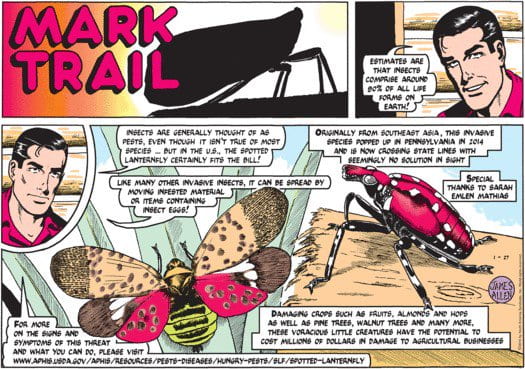Increase awareness and knowledge with something that catches your eye!

NFG, 1/29/19
Increase awareness and knowledge with something that catches your eye!

NFG, 1/29/19
Running bamboo (Phyllostachys sp.) is an invasive plant, often planted to provide a privacy screen or on property lines. Bamboo may be planted too close to a property line and invade by runners (rhizomes) and underground stems. Running bamboo will spread three to five feet per year, sometimes further. Clumping bamboo species do not have runners. Effective July 1, 2017, residents who plant bamboo in the ground must obtain a waiver from the City of Newark. Any bamboo planted after July 1 must be at least 20 feet from any property line, while residents with existing bamboo must continue to maintain it in its current location. There was a similar ordinance in Dover, DE in 2012. 
See the recent article for more info: http://www.newarkpostonline.com/news/article_60736ae6-7e8e-5b06-94cd-710521066725.html
NFG 7/1/2017
Invasive species may be insects, plants, fungi, animals, or other invasive types of organisms. Invasive species establish at the expense of our native flora and fauna. Be on the lookout for unusual types of things. Early detection and partnerships for management are key to raising awareness and finding solutions!

Delaware Invasive Species Council helps to educate and coordinate efforts in Delaware to eradicate or manage invasive organisms : http://delawareinvasives.net/
Check out the information at the following websites: http://www.nisaw.org/
http://blogs.usda.gov/2016/02/22/national-invasive-species-awareness-week-snakes-starlings-and-swine-oh-my/
NFG 2/27/2017

The spotted lanternfly, a poor flying but strong jumping moth-like pest that attacks grapes, apples, tree of heaven (Ailanthus), and other hosts has been found in Berks County Pennsylvania. The inch long insect is a potentially devastating pest. Please see the PA Department of Agriculture web site at: http://www.agriculture.state.pa.us/
The Spotted Lanternfly (Lycorma deliculata), an inch-long black, red and white spotted pest, is native to China, India, Japan and Vietnam. It’s an invasive species in Korea, where it has attacked 25 plant species which also grow in the U.S.. In the U.S. it has the potential to impact grape, fruit tree and logging industries. The pest attacks many hosts including grapes, apples, pines, stone fruits and more. This time of year, look for adults and egg masses on trees such as Ailanthus, and please collect samples and report any suspect finds to your local Cooperative Extension office or Delaware Department of Agriculture.
